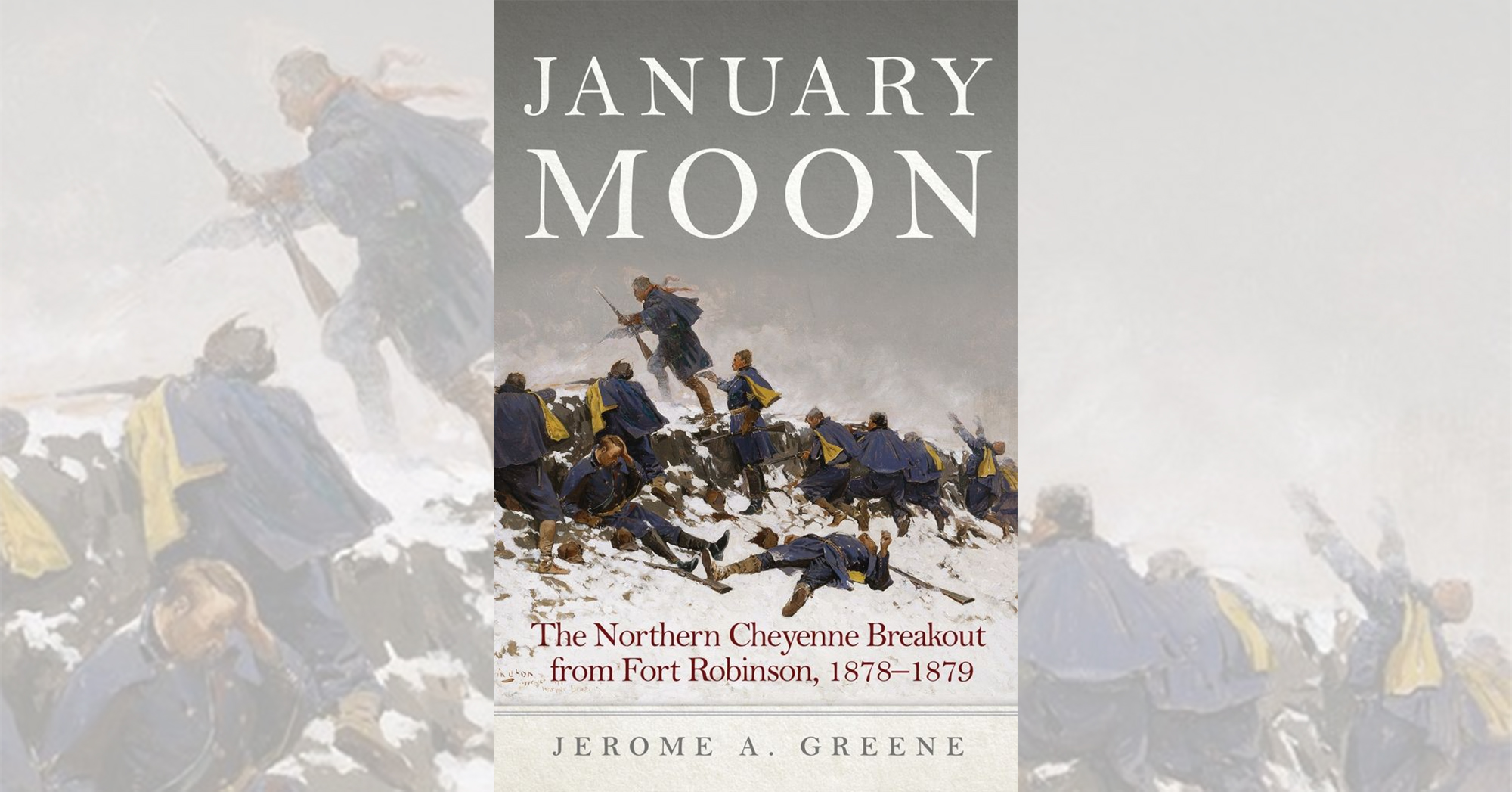January Moon: The Northern Cheyenne Breakout From Fort Robinson, 1878–1879, by Jerome A. Greene, University of Oklahoma Press, Norman, 2020, $29.95
Jerome A. Greene, retired research historian for the National Park Service and author of numerous books involving American Indians and the U.S. military, reexamines the desperate, ultimately tragic attempt by Chief Dull Knife’s Northern Cheyenne to escape their imprisonment at Fort Robinson, Neb. By the end of the 1876–77 Great Sioux War the Army had driven the Northern Cheyennes south to Indian Territory (present-day Oklahoma). In that hostile environment they began to sicken and die from such epidemic diseases as malaria or from starvation. In 1878 Chiefs Dull Knife and Little Wolf resolved to lead 300 of their tribe out of their government-designated reservation and return to their northern homelands. Greene describes in detail that valiant effort and the battles they fought with the soldiers that tried to force them back, notably a string of successes that highlighted Little Wolf’s natural ability as a commander.
As they neared their goal, the chiefs split forces. Dull Knife’s band soon surrendered to the Army and followed the road to Fort Robinson to await the government’s judgment. Its decision, rendered in early days of 1879, was an order to trek back to their reservation in Indian Territory. Lacking proper winter clothing, Dull Knife and his people saw no option other than to attempt a breakout. On the night of January 9, after a desperate struggle against the garrison, the Indians managed to get as far as Antelope Creek, where the bluecoats annihilated anywhere from 32 to 64 of them. Eleven escaped to join Little Wolf’s band; 78 others were recaptured. Eleven Army troopers and one Indian scout were also killed. Four years after the uneven battle Assistant Surgeon Carlos Cavallo sold Cheyenne skulls and other remains he’d found at Antelope Creek to the Smithsonian Institution.
The events leading up to the bloodbath at Fort Robinson inspired legendary director John Ford’s Western Cheyenne Autumn. Involving as it did 150 Cheyenne men, women and children armed with 12 rifles, three revolvers and miscellaneous knives, one cannot help but question the magnitude of the threat they posed to the fully equipped U.S. cavalry and infantry who mowed them down. One might also ask about the hatred underlying that sense of menace. The author, however, suggests it was not the behavior of lower-ranking Army officers that brought on disaster but the strict orders they received from their superiors in Washington, D.C. What those authorities wanted above of all else was permanent confinement of the independent bands of hunters and warriors on American soil. January Moon makes an excellent addition to military history, albeit one tainted with deep sorrow.
—Thomas Zacharis
This post contains affiliate links. If you buy something through our site, we might earn a commission.





